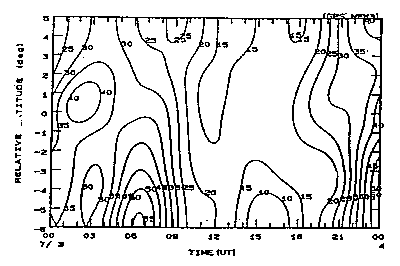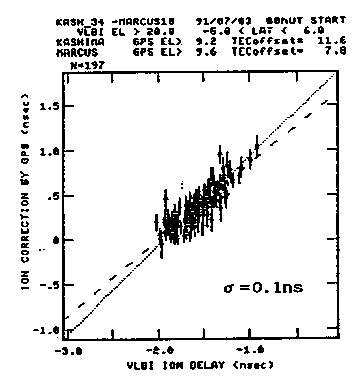
Figure 1. An example of VTEC distribution. Unit is 1O16electron/m2.
Total electron content (TEC) measured by dual band GPS receiver can be utilized for calibration of ionospheric excess delays of geodetic VLBI when observations are made at a single frequency band. A key point in realization of ionospheric delay correction is how well TEC measured for GPS direction is mapped to radio star direction observed by VLBI. We have developed a two step mapping method: at first distribution of vertical TEC (VTEC) on a time(UT)-latitude plane at a station is estimated from TEC measurements (Fig.1), then VTEC is mapped to a desired radio star direction. This process is carried out at each station. By differentiating TECs mapped to a star direction, we can obtain an ionospheric correction for VLBI data analysis. The results is evaluated by comparing actual ionospheric correction observed by dual frequency band VLBI and that calculated from TEC measured by GPS receiver. As demonstrated in Fig.2, a good coincidence (SD < 0.1nsec) is obtained in an elevation angle range larger than 20 degree. By taking horizontal density gradient into a mapping model, fitting could be improved.

